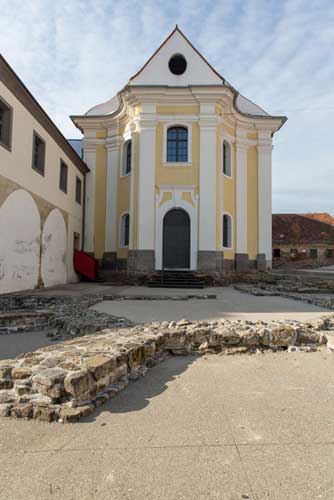|
text 
Monika Jaworska-Witkowska*
Insatiability and “inextinguishable vitality”
of the Great Mother Archetype.
The mystery of the “bearing womb” as a symbol
of creative universalism**
“In pregnancy and in procreation
it is not woman anticipating the Earth
but it is Earth overtaking woman as exemplary”.
(Platon)
Abstract
The text introduces cultural and social exemplifications of the Great Mother Archetype, which is in Jung’s conception the psychic principle of the mother, the principle of something acting like mother, as a creative matrix and a mystery or “bearing womb”. This interpretative perspective has served to distinguish a premise, according to which the mother’s archetype may serve as a universal symbol of creativity/creation, while being a rule beyond time and individual being. In its desire, vitality and unrestricted vehemence within the mother archetype is simultaneously one of the insatiable things, i. e. unsubordinated, with unlimited and infinite fertility, as the “eternal presence” which cannot be stopped within the cycle of transformation between destruction and resurrection. The text analyses different heuristic consequences of the initial premise, concentrated around ideas making more concrete problems of the Great Mother Archetype with the categories of: symbolic death and renaissance, the imagination completeness, the symbol of eternal matrix and visual forms of any “being born”, all that is fertilizing, potentially maternal and thus dual.
Introduction
The eternal “Mother’s womb” and the “Nature of omnifarious life” as archetypical spaces of arche-images and symbols of procreation and creativity, “inextinguishable vitality”, unrestrained fertility of Nature, they are all a (pre)text here for thinking about “mystery of bearing womb”. It becomes an example given by Earth to woman, as a Mother’s archetype[1], being an insatiable thing, never fully satisfied, as unbridled exuberance of the accepted forms, lusty and passionate nature of “any life”, represented by the Great Mother Archetype, the Creative Force and the Motherly Principle. Carl Jung’s conception permits me here to think about an insatiable matter: motherly rule of giving life and of being within contexts referring to archetypical imaginations of untamed processing of creation, places and mysteries of magical transformations an symbolic metabolisms, within symbolism and psychology of Great Mother Archetype, being the phenomenon which never talks enough and which has a vital and fertile nature which up to now cannot be stopped and saturated. In what follows we shall look attentively at various aspects of this complex phenomenon in order to build a wider perspective of understanding interrelations of maternal contexts in the individual development of a child. The basic reference is constituted by the analysis of E. Neumann and his introduction to the phenomenology of femininity. This is also a modified version of a paper published in Polish elsewhere[2] and making part of a wider project under elaboration.
Magna Mater and the “eternal presence” within
“contradictory gifts”. On a timeless Ancient motherhood
matrix beyond individual embodiment
Let’s us quote, to start with a following formula by A.W. Parson: “Whatever is begotten belongs to motherhood matter which has born it, brought out to light and now nourishes it. But the mother is always the same, and in the final settlement it is always the Earth, which is substituted in human race by a woman within a whole series of mothers and daughters”[3].
“But the human soul does not exist just from today! – it is many millions of years old” was written by C.G. Jung in his introduction to the epoch crucial achievement Symbols of Transformation (1998, p. 13). An individual consciousness is as if “seasonally flourishing flower or a fruits bringing branch, which stems out from a winter lasting underground rhizome, (...) since it is a root of everything” (ibidem). It is just about the “root of everything”, which is a metaphor present and embodied in the nature (Mater Natura) through her “onerous womb”, that I want to write here, since the root, i. e. the arche-causation of living/being is insatiable in its vitality and fertility or cultural imagination. It is simply ancient, insatiate in a dynamics of received symbolic states and of their exuberant nature of timeless transformations within imaginations of all the cultures. It is therefore that the ancient motherhood matrix is insatiable as eternal arche-matrix of being, passing beyond any individual existence, universal as matrix.
The archetype of breeding and creation takes on an infinite series of picture forms (arche-forms, arche-images) of herd with life. Insatiable “rhizome”, permanently onerous and with no way for the “root of all things” to fulfil its cyclic life-giving ability – all of them are just analogs of a permanently active Great Mother Archetype, or the Creative Force, Mystery of Onerous Womb, Mater Natura[4], Mater Spiritualis[5], Magna Mater[6], and Mater Dolorosa[7], all representing three levels of development: Life, Transformation, Emancipation (Dudek 1992, p. 70).
The unquenchable vitality/fertility of Nature in its symbolic maternal meaning as “mystery of onerous womb” and the capacity to infinite transformations are composed by Jung into religious studies approach, anthropological and psychological conception of the Great Mother, having archetype as the central notion and referring to comparative studies carried out by Jung over mythologies and religions of the world, the psychology of primitive tribes and alchemy as well. The Great Mother archetype has an infinite diversity of cultural aspects born by a human race in the history of consciousness development, all undergoing anthropomorphisms and treated in theory-like approaches through various types of goddesses-mothers and symbols of their symbol-creative activity. The arche-image of giving birth and of whatever maternal might seem potentially was present throughout all cultures and epochs (eons) under form of ‘chthonic’ images. The specificity of archetypes as inherited and universally valid forms of “eternally present” of what is mediocre, typical, common and universal in human psyche consists of organizing (self-organization of) unconscious as a matrix for consciousness since “Archetypes are just the very forms or bearings in which there always was a flow of a stream of psychic process” (Jung 1998, p. 295). The structure of the Great Mother Archetype and its dynamics, energy and symbolic imagining potential with its contents meaning – all show therefore that we have here to deal with the matter implicitly insatiable. As it was Goethe writing: “eternal thought, eternal play” with a “circular whirl of all creature in images” and these references to Faust illustrate very well an eternal impulse from Mater Natura with its cultural symbolic, thought and play taken within a heuristic (fertile!) conception of mother archetype and its shape[8] and psychology. There is a countless number of symbols of Great Mother and they are often linked with notions representing e. g. salvation, fascination and anxiety, fertility and prolific potential, protective quality and careful approach, namely everything leaving sense of insufficiency and longing:
“The qualities linked with the archetype of Great Mother include care and compassion, magical female power, wisdom and spiritual sublimation transgressing reason; and also any benevolent gesture and impulse, thus everything that is a manifestation of friendship, love and support, and what stimulates fertility and growth” (Jung 1992, p. 8).
The Hindu conception of prakryti[9] refers to archetypical figure of Great Mother just three features: being good, passion and darkness, in other words three fundamental maternal qualities: careful and feeding kindness, unrestrained sensitivity and impenetrable depth (ibidem).
The negative aspect of Great Mother in its turn is linked most of all with what is secrete, hidden, absorbing[10], entwining, including, bringing death, dark, seducing, terrifying and inevitable as the destiny (cf. Jung 1992, 1998). The structural bipolarity of archetype, including positive and negative aspects, creates an incomprehensible unity and contradiction at the same time, contradiction within the highest coherence. This integral approach permits to understand the meaning of myths of renascence. It is impossible to match with rational thinking the diversity and plasticity of unconscious forms of Great Mother Archetype, the very “loving and terrifying mother” or “the eternal nature, godly mother, horrible one” (Jung 1998, p. 507). All this refers to maternal depth, renascence womb, a dualistic mother as an unrestrained and unshakeable Nature:
“In depth there dwells knowledge, maternal wisdom; a unity with her enables an intellect to get an apprehension of deeper matters, arche-images and archaic forces lying at the bottom of all life, and forming its revitalizing, supporting and creative matrix” (Jung 1998, p. 520).
The vitality and activity of mother archetype, “the one which comprehends” (Jung 1998, p. 396) and who gives out “contradictory gifts” is recreated in a constant cycle of symbolic renascence within a complex formation of psychic order of (every) human being and it gives birth to unconscious longing for a return to maternal womb (earth, water, trees) in order to obtain a chance for a renascence. In this sense myths, religions, images, fantasies and symbols become just “variations of a single theme” with a constant idea and insatiable relation with women as a matrix, present in metaphors of: life-sustaining contact with fertile ground, plowed field, furrow, source of life, tree of life, a body desiring its complementary counterpart, concave vessels which could be filled up and any other imaginations of insatiable uterus.
The Great Mother Archetype: a Janus archway of
Life and Death with insatiable transformations of the
“creativity principle”? On a longing which is a “devouring
passion”
There is a number of magic transformations of insatiable but still creative power of maternal principle which can be presented as: peregrination and the birth of a demigod, metabolism of libido, symbolic interpretations of cyclic character (birth) of nature and extraordinary mystery of life and death metamorphosis, including symbolic perspective of the latter.
As every archetype of the collective unconsciousness the very Great Mother Archetype has got a bipolar structure which generates both positive aspects (birth, transformation, renascence) and negative ones (death, horror, absorption, including, braiding, enveloping) [11]. The Earth, as one of the oldest symbols of mother’s archetype gives out fetus (of life) and takes back burying dead. Death is perceived as entering mother’s womb[12] in order to make a subsequent renascence (c.f. Jung 1998, p. 307). The motive of sun absorbed by the sea and then reborn anew at dawn from that sea again functions as a permanent example of solar myths, where the symbolic mother’s participation leads to a demigod’s birth, who then repeats incessantly a peregrination within the circle of a profound conversion. Immersion into sea, i.e. into “mother’s womb” (cf. “pregnant sea”) becomes an act of magic transformation. Mother creates/gives life to a hero, god. Such personifications are a consequence of an archaic psychology which adds to psychic energy (libido) godly qualities and dynamism. “Thanks to overcoming his mother a hero becomes similar to the sun, and then he creates himself anew” (Jung 1998, p. 339). The symbolic nature of such an imagination is linked with a secret of mother’s archetype. Overcoming mother is symbolizing a reversal of developmental inertia and it serves as an initiation of an individual growth and permanent conversion into a higher degree of psychic maturity (“similar to sun”).
It is worthwhile to make an important recalling. What is begotten from a body integrates itself within Jung’s theory in what is begotten spiritually, namely thanks to mother’s symbol, to mother’s principle, i. e. thanks to something acting maternally (e.g. fruitful mind, vitalizing thought, birth of an idea, fertile imagination, with thoughts pregnant of meaning). It means that mythological images and cultural visions may have their parallel symbolic interpretation concerning a personal psychic structure of a human being. Similarly is happening with a mythological aspect of two mothers’:
“The two mother’s motive indicates the idea of a double birth. One mother is real, human, while the other is symbolic, godly, supernatural or just distinguished with some exceptional qualities” (Jung 1998, p. 412–413).
The solar myths and those of rebirth are linked with nostalgia for mother, which may become a destructive passion (Jung 1998, p. 305). Longing after mother, about the initial psychic state, the undifferentiated one, consists of deficiency stemming from the incest prohibition. The incest taboo makes it possible to contrast radically with a dark state of attachment to mother and to forms and qualities represented by her (as care, protection, calm, consolation, security), which disturb individuality in its development, requesting challenges for its growth. The dangers of a psychic attachment to mother of an adult person may be expressed in incest symbols, through a desire and search for a renascence, return to maternal womb, through death (entering into mother’s body) and then a rebirth. The incest taboo helps to stop libido, which is on its way to a regression (longing for a return to mother toward unconsciousness), and to suppress it and cause it function progressively (to grow) but within a higher degree of consciousness (cf. Jung 1998, p. 274). It is so since libido as stated by Jung, while it has become regressive (tamed by an obstacle) always returns to possibilities inherent in an individual, and the vital energy as a permanent flow of stream always creates new forms of activity.
“It is just why solar or rebirth myths invent any possible analogies with mother, in order to let libido pour itself into new forms and therefore be effective in prohibiting a regressive falling into more or less real incest” (Jung 1998, p. 290).
Such analogies embrace among others “pregnant sea”, a whale swallowing a hero, a snake entwining a demigod, moon like a uterus, a dragon, a vessel to be filled with a fertilizing contents, a cavern, a source ejecting life, etc. It is so since mother actually serves for an “imago, a common psychic image” (Jung 1998, p. 422) composed of essential psychic contents.
“A relation with mother must die, and this causes also the participant almost to die. It is the same degree in which a son with attached to mother there emerges a violence of a separation and the stronger was the broken link the more dangerous is ‘mother’ going out to meet the son under the form of unconsciousness. It is because as a ‘mater saeva cupidinum’ – a wild mother of lust – while undertaking another shape it endangers the fugitive with a complete absorption” (Jung 1998, p. 401).
Mother, as proved by Jung, is “actually a gate which is opened towards unconsciousness, through which there goes a road to the ‘maternal kingdom’. Whoever enters there gives up one’s conscious personality of the ‘self’ to the dominant influence of unconscious” (Jung 1998, p. 422). A hero, embodying unconsciousness, with his symbolic journey functioning as a metaphor of maturing individuality and of conscious growth and separation from mother with assimilating unconscious contents, must constantly from the beginning undertake efforts of rising in order to reach a higher level of consciousness, while symbolically liberating itself from the mother.
„The sun, rising in the sky in a triumph, liberates itself from embrace of the surrounding sea womb – leaving behind the culmination point of zenith and all glorious acts of the day – again falls into maternal waters, into all concealing and all enveloping night” (Jung 1998, p. 453).
Jung would convince that the solar myth is undoubtedly the first and the most profoundly justified image, which has right to become a symbolic expression of human destiny:
“At dawn of his life a son is in pain while separating himself from his mother and family circle in order to rise to the peaks ascribed to him, deceived by dreams as if he had in front of himself just an ardent enemy, despite the fact that in his chest he wears the very dangerous longing for his proper depth and to for getting himself drowned in his own source, and for being absorbed into Maternal Kingdom. His life is a continuous struggle against the danger of suppression, struggle for a radical but also only temporary liberation from a permanently watching night” (Jung 1998, p 453).
Within solar myths the death is not an external enemy but one’s own internal and continually reproduced longing of a hero for nothingness, for immobility consolation and a need of a fulfilment, that is a regress to libido and entering into body of “mother”, as well as an equally unceasing cycle of all ruptures with itself. The solar myth/ heroic myth, as a pain of suffering unconsciousness is most of all the “self-presentation of searched longing of unconsciousness, which reveals inconsolable or rarely suitable for consolation a desired light of consciousness” (Jung 1998, p. 261).
The psychic vital force (libido), as a need to undertake tasks of differentiation of consciousness in a symbolic form may be represented as the sun and it was in this sense that Jung was talking about the fact that solar myths actually consist of a psychology projected into the sky. This way unconscious drama of transformation under the shape of projection displays upon screens of existential way its bipolar strivings and ambi-tendencies.
Cycles of transformation, symbolic deaths and renewed births, together with archetypical bipolarity and polyvalence make mother archetype also a form of generating horror and cruelty. “Contradictory gifts” from the Archetype of Great Mother, i.e. continuous killing and unfinished rebirth of the cycle of transformation in the creative principle of a symbolic maternal womb make out of a continuous rhythm of life and developmental obligations an insatiable affair. “Unspoken revelation” through Mother Nature, a Psychical Arche-matrix are just mysteries of unexpired vitality and infinite diversity of figures and shapes. It is so since “mothers” are surrounded with “images of any creation” (Goethe, Faust, part II, p. 261).
Places and mysteries of magic transformation:
Unconsciousness, Water, Tree, since “life knows no death”
Insatiability of life or through life is linked with mysticism of transformation and transfiguration, reaching towards new forms of being, directing energy for metamorphosis, growing upward and constantly becoming reborn. Magna Mater is infinitely fertile, insatiable and linked with places of transformation within ritual of a repeated birth, like water, Earth, tree. Cyclic succession of life forms along the principle of “nature womb” or “mother womb” gives an image of insatiable: life, nature, human nature, human being itself. Insatiable takes shape of an infinite peregrination towards a renascence, of impossible to fulfil longing for something what exceeds us, our lust, desire, passionate search for sense. These forms are generated through archetypes in an unconscious way, out of permanent activity of the mother’s principle and maternal formula and thus it is unrealizable to become conscious completely of one’s insatiable condition. If we perceive insatiable in a close relationship of Great Mother, then the revealing spheres of consideration will oscillate around notions linked with passion, fervency, lust, libido, anastomosis, the alchemic communio and coniuncto, unification and assembling with unconsciousness serving as mother/matrix of individual consciousness. Unconsciousness is thus insatiable, but saturation which cannot be carried out is just a postponement of sufficiency, setting off satiety, that is necessary but/and unrealizable striving towards a Completeness.
Within the language of Jungian conception it will mean unceasing flow of energy between opposed values in order not to permit reduction of some of the poles of a structure within which there is energetic movement taking place. This is unceasing flow, leaving insufficiency and incapacity of feeling Totality. Jung is of the opinion that the Archetype of Completeness (the Self, Totality) cannot be grasped consciously or cognized. However unconsciousness is provocative in its insatiable and within mysteries of enantiodromia, which has its value going into its opposite while not losing the initial quality. This very insatiable of unconsciousness together with unceasing movement between conscious and unconscious, while impossible for a complete saturation still supports desire of a Complete and the very insatiable itself.
The unification of opposed basic element of life is most frequently linked in mythic imaginations with symbols of water and maternal meaning of water, which is a source of life and its transformations up to rebirth, both organic and symbolic. Water as a topos of transformation (source of life, fetal waters) and a symbol of unconscious and Great Mother, fulfills the mystery of renascence, a repeated birth. Being born out of water initially meant birth from mother’s body (Jung 1998, p. 292).
The depth of maternal waters, similarly as Earth is a place to receive dead (it is a negative aspect of Great Mother), who are supposed to achieve a reincarnation of energy within the life cycle of the Nature:
“These dark waters of death are however also waters of life, while death itself and its glacial embracing is just a maternal womb – similarly as the sea, which although incepts the sun but still later on makes it be born again. It is so since life does not know death” (Jung 1998, p. 282).
The coincidentia oppositorum inherent in cyclic mysteries of Nature, which is lusty and insatiable refers also to the symbol of permanent unification and assembling of opposites. It is valid also for phallic figures symbolizing libido, within Jungian wide approach being the whole of psychic energy. Within the culture creating symbols, libido it has a strict link with fertility, life-giving and lustfulness. Phallic figure, having maternal aspect and being the place of magic metamorphosis is a wooden piece or a tree itself (Paradise Tree, Life Tree, genealogical tree). It is a result of various elaborations on literature and anthropological as well that the Life Tree brings fruits (“the fruit of life of Yours”), thus the aspect of birth is situated within such a symbolic. Jung is recalling myths, which suggest that people are being born out of tree and within trees buried after death. The figure of tree is like Earth’s fallus and in this sense, due to androgynous elements it is asexual. However tree as a place of transformation contains still another extraordinary dimension. The symbolism of Virgin Mary, giving birth to Christ refers also to this aspect which treats Christ Mother as a cross (the tree of cross), where he died and which has become also the symbol of Resurrection. The cross of Christ is at the same time Tree of Life and Death (Jung 1998, p. 302).
The Uroboros symbol of the initial psychic state,
insatiable repetition and cyclic destruction and renascence
This fragment is a short complementary amendment or a wider annotation to the first part of this text, dealing with archetypical “eternal presence” and Activity of the Great Mother Archetype in its symbolic prolongations. It is worthwhile to refer here to arche-images and ‘chtonic’ imaginations which have resulted with emerging of undifferentiated maternal archetype. A well known and universal image of Uroboros, the snake biting its own tail, serves as symbol of undifferentiated primordial archetype, out of which only later there emerged in its form Great Mother Archetype.
Differentiation of archetypical phenomena will be a split of an archetype and will consist of a complex opacity of primordial archetype, which contains a variety of opposed symbols and even excluding one another, which then separate themselves and put in order according to the principle of opposition into a bipolar structure of archetype (cf. Neumann).
Coincidentia oppositorum is characteristic for a primordial situation of unconsciousness, while its products cannot be put into opposites as yet. Within such a stage of archetype splitting unity is paradoxical, combining what is unrepresentable and inexpressible. As a symbol of paradoxical beginning, the primordial situation, an embryo form of consciousness and symbol of initial psychic state we have the Uroboros, Great Roundness, a primary archetype in itself. Within the history of development of consciousness and the phenomenology of the womanhood Uroboros is represented as a Wholeness, archetypical Great Roundness and symbol of undifferentiated chaos. It is from here that emerges a Great Femininity, firstly having stage of maternal qualities of Uroboros (with only minimum symptoms of Great Mother), thus a snake with feeding and taking care approach, and then passing to the stage of Great Mother with Uroboros behind it, where there are new aspects of Great Mother well emphasized and snake appears only as an accompanying attribute which is permanently present in the process of creating symbols. Next from Great Femininity, the archetype still undifferentiated there emerges the Great Mother Archetype with its dual internal structure and with bipolar (negative/positive) stimulating of any individual.
This short amendment is completing former thinking about Great Mother, her figures, symbolic meaning and psychology with an imagination about the state which has generated her internal contradiction, a difficult and irreducible complexity with cyclic tendency and that of repetition. Uroboros is unceasing in its circular peregrinations, where the end conforms with the beginning of renascence (through rejected and then created again snake’s skin). The insatiability inserted onto Uroboros and its psychological symbolism, enabling its translation into psychic alternatives of a contemporary world are linked with associations concerning personal development of the individual within rituality of symbolic death and then a renewed birth again. The underground (chtonic) representations concerning Uroboros as creating Great Roundness, as a symbol of the Self and Totality with their cultural background, can be inscribed into a symbolic cyclic process and is linked with phenomenon of metamorphosis which is generated by an ambivalent activity of the Great Mother Archetype.
Great Womanhood as “a black ground waiting to be fertilized”
The Great Mother Archetype is exceptional among examples of comparative studies on myths and religions as a separated centre of a wider mythological whole, namely the concept of Great Womanhood. One has distinguished unique features, defining the widest perception of maternity out of mixed, positive and negative aspects of cultural shapes and archetypical figures. Two qualities of femininity, namely vehemence and transformation constitute a foundation for search of reciprocal links of insatiable mother, having unlimited fertility, with features also strictly feminine, beyond associations just with maternity. Therefore we shall put temporarily our accent away from maternal symbolism and beyond psychology of Great Mother and concentrate attention upon analysis of experiencing womanhood, with its insatiable proliferation among the Nature symbols and through wide spreading of images and cultural personifications. The very human imagination is also insatiable here. Saturation of insatiable imagination represents erotic quality of mind, the eros of cognition, desire of understanding and lustfulness of insatiable passion of existence. The quality of vehemence or in other words the spontaneous feature (cf. Neumann, p. 36–37) is dual and constitutes a background for a conservative, stable and unchangeable aspect of womanhood, dominating in maternity.
“The name of a spontaneous/vehement feature is attached to this aspect of womanhood, where as a Great Roundness, i.e. the one which contains, it reveals an inclination to keep what is emanating out of it and to embrace it as if an eternal substance. All that is born out of her belongs to her and it is subordinated to her, and it is so even when as individual it will manage to get autonomy. The eternal Womanhood is attaching relativity to this autonomy, treating it as a negligible variant of eternally stable substance, which she is by herself” (Neumann, p. 36).
All this implies that the vehemence discloses itself within situations dominated by unconscious and refer to including in itself or absorbing as maternal inclinations. Vehemence, as a feature referring to primordial situation of psyche with energetically and symbolically weak complex of a conscious “ego” is imposing a danger of activating tendency of return to the state of primary unconsciousness, i. e. to the phenomenon which Neumann has called “psychic gravitation” and leading consciousness to the loss of its libido. It should be noted however that a conservative tendency of vehemence quality, its matriarchal conservatism and inclination to keep inside as preserved and protected, is simultaneously a matter of an offensive, reproductive, proliferating, fertile, but with a participation of the other feminine quality, i. e. transformation, which coexists at the same time with the former, being compensatory, complementary and in opposition to vehemence. The transformation quality “puts into movement what already exists, it forces to change and metamorphosis” (Neumann, p. 39). Only then, together with development of consciousness and “ego” complex of individual and with a proper energetic charge (within dynamic perspective of consciousness) and with more independence of consciousness from the unconscious there may appear a relatively equilibrated and life oriented conflict. We may talk here about a kind of a “moral obligation to growth” (Jung). A reciprocal participation of vehemence quality between mother and a child can be seen in a course of process of psychic development. A weak child’s “ego”, dependent from mother[13] with the advantage of unconscious dynamics and archetypical contents is under domination of vehemence feature, which along with consciousness getting maturity will give way to the feature of transformation.
It is worthwhile to emphasize together with Neumann two regularities, which are generated by a bipolar conflicting tendencies of vehemence and the transformation feature, which altogether highlight insatiable archetype of womanhood and “inextinguishable vitality” of Great Mother. First of all, differentiation of personality, i.e. widening of consciousness and emancipation of a person from under domination of unconsciousness leads to enforcement of the transformation feature which then “becomes insistent, suddenly urges development and introduces movement and anxiety” (Neumann, p. 41). This movement within the first stage of the transformation feature doesn’t take its shape as yet and while being “just movement it settles only process of transformation within snake circle of Uroboros, since it is this snake of the beginning which is not only a roundness but also a rolling circle and the entity which fertilizes itself, brings birth and absorbs” (Neumann, p. 40). Insatiable, insistent, urging and infinite circle of transformation is therefore calling again upon association with maternal uroboros, as a stage in forming archetype of Great Mother, from undifferentiated primordial archetype, functioning for oneself. Secondly, the feature of transformation and the vehemence force quality of womanhood are simultaneously and clearly present and efficient in life oriented fundamental creativity of what is woman oriented and what is maternal, namely within the emergence, birth and feeding of child. There is an inter-penetration of tendencies to conserve (preserve in oneself) and to transform:
“already from the very beginning both feature do not exclude one another, they interpenetrate themselves reciprocally and link in a number of ways and sometimes only in rarely happening constellations of extreme character we find one of them in a isolated state. Despite the fact that both of them find themselves simultaneously, almost always it turns out that one of them i dominating over the other” (Neumann 2008, p. 39).
Neumann is advancing his reflections and gives illustrations showing that a pregnant woman in her relationship versus developing fetus and in a later birth act “becomes an instrument of transformation of her own structure, child’s structure within her and beyond her” (Neumann 2008, p. 41). And there is a deeply penetrating exemplification showing creativity of what is feminine within a context of a coherent joint occurrence of conservative vehemence and creative transformation. An interesting space of reflection concerning the very unconscious destiny of a woman and an example of development of transformative feature is constituted by a mystery of blood. Here it is worthwhile stressing that we take under consideration experiences of womanhood, where vehemence being born and creations of transformation seem not to have potentially a decisive and concluding fulfilment. The insistent, returning and insatiable circle of transformations will not be satisfied with its own movement as such.
Interior of a vessel of body and the insatiable numen of vegetation
The notion of numen refers to a strongly energetic and full of contents old category of numinosum. At the same time all vital functions, particularly matter transformation, reflect formula of vessel-body with the central category of a dark interior of vessel and that of the body, as a symbol of unconsciousness. The experience of body as vessel with its unknown, dark and instinctual interior, where there is a permanent exchange of matter, becomes as well the experience of birth from bodies-vessels and functions as an experience of places with contents transformation, namely that what comes out of the body and is treated as being born from a vessel (hair, breathing, excrements, seed, speech, child). Woman’s body is treated within the history of consciousness development interpreted as a vessel of life, where “life is undergoing formation, and all what is alive is originating from there and it is from there that it can come out into the world” (Neumann, p. 50–52).
It is not however the end of recalled associations with a arche-matrix of creation. The interior symbol, as an internal world may be linked also with the interior of Earth and analogy world-body as a vessel of the world.
“If the identification, happening in a prehistoric epoch, of the body-world in its first and unspecific form will be related with a symbolic identification of womanhood as woman-body-vessel then we shall get here a universal symbolic formula (...):
Woman = body = vessel = world” (Neumann, p. 53).
This formula appears at early stages of consciousness development. The identification of woman with the world is characteristic for a matriarchal stage of development (“early humanity”), where unconsciousness with its projections of “Heaven and Hell” dominates over a weak underdeveloped consciousness.
World’s vitality becomes possible and moved on (transformation process) thanks to Great Womanhood containing opposites. Thus
“Womanhood is revealed as a vessel not only in this way that within vessel body there ripens her fetus, which then emerges out of her, passing next to the vessel of the world, but also in such a way that she accepts as vessel of death those dead locked up in a cave or a coffin, grave or urn” (Neumann, p. 55).
There is also emphasized both the vehemence feature and the transformation force (creativity of uterus), the nature of giving birth, of protection, feeding and receiving on the way back to whatever careful within symbolism of the womb containing (nature, underground space, water, unconsciousness).
“Since earth as a creative aspect of ‘Great Womanhood’ dominates over vegetative life, a mystery is located in more profound and more primary form of ‘pregnancy and procreation’, what any animal life is founded upon. This is the reason why in the case of Earth and its transformations there are taking place the highest and the most significant mysteries of womanhood” (Neumann 2008, p. 60).
The stomach-centre of interior and the womb-symbol of entering constitute the most imaginative embodiment of the vessel symbol.
* KPSW Kujawy and Pomerania University Bydgoszcz
** Czasopismo Pedagogiczne/The Journal of Pedagogy, Numer 1-2 (2015-2016), pp. 214-234.
(Akademia Pomorska w Słupsku, Instytut Pedagogiki i Pracy Socjalnej, Słupsk, Poland)
Bibliography
Dudek Z.W. (1992), Ciało nauczycielem życia i śmierci. „Albo albo. Psychologia cienia”, 2.
Goethe J.W. (2001), Faust. cz. II, Wydawnictwo Zielona Sowa. Warszawa.
Jung C.G. (1998), Symbole przemiany. Analiza preludium do schizofrenii. t. III. Wydawnictwo Wrota. Warszawa.
Jung C.G. (1992), O naturze kobiety. Wydawnictwo Brama, Poznań.
Neumann E. (2008), Archetyp Wielkiej Matki. Wstęp do fenomenologii kobiecości. Wydawnictwo KR. Warszawa.
Notes:
[1] In this text I apply two conventions of transcriptions: while referring to the Great Mother Archetype as recalling the proper name of Carl Jung’s conceptionI use big letters, however I apply small letters whenever I use mother’s archetype as a universal analytic category of religious thinking and of a comparative mythology.
[2] Cf. M. Jaworska-Witkowska, Nienasycenie i „niewygasła żywotność” Archetypu Wielkiej Matki. Misterium „rodzącego łona” jako symbol uniwersalizmu tworzenia, [w:] Transdyscyplinarne Studia o Kulturze (i) Edukacji, Rocznik Naukowy Kujawsko-Pomorskiej Szkoły Wyższej w Bydgoszczy, no. 7–8, 2012–2103, pp. 91–106.
[3] Following E. Neumann, Archetyp..., p. 62 (c.f. Bibliography).
[4] Mother Nature.
[5] Spiritual Mother.
[6] Great Womanhood/Great Mother.
[7] Painful Mother.
[8] The simplest associations with archetypical figures of the Greta Mother are mother and grandmother and symbolic mothers as well: goddesses, God’s Mother, Virgin Lady, Godly Wisdom (Sophia) (Jung 1992, p. 7).
[9] Following Hindu mythology prakriti is at the same time arche-matter and arche-reason identified with the godly energy of female basic elements.
[10] There is a reference here to interference of an archetype of a terrifying absorbing mother whose psychic attraction due to her proper energetic force is so great that the amount of “self” complex cannot meet the challenge and therefore such a complex is “plunged” or becomes absorbed (cf. Neumann, p. 38).
[11] There is also a motive of quartering, present in solar myths as the one opposite to assembling a child into mother’s womb, see Jung 1998, p. 306.
[12] Similarly step pattering, digging in the ground, a ritual dance – all these have a fertilizing meaning and function as motives of a reiterated entering into the body of mother-Earth.
[13] Analogical parallel can be seen within the history of development of humanity consciousness, since a child is here within stage similar to the primitive man.
Salve Regina as the Great Mother Archetype
|
|

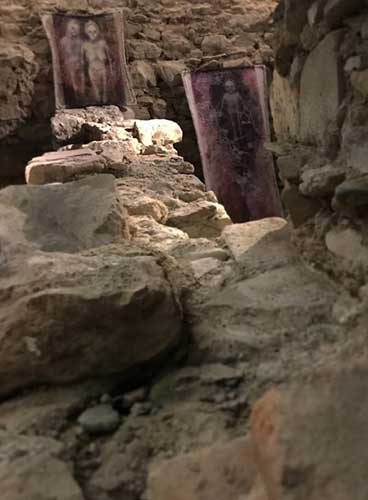 ...
...
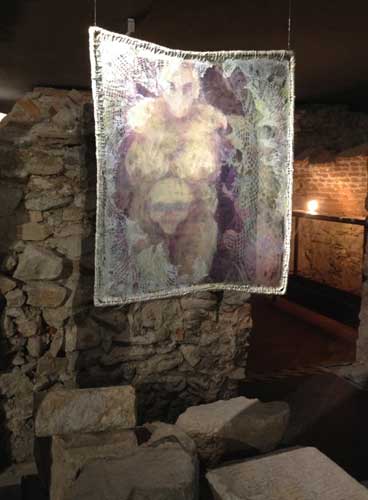 ...
...
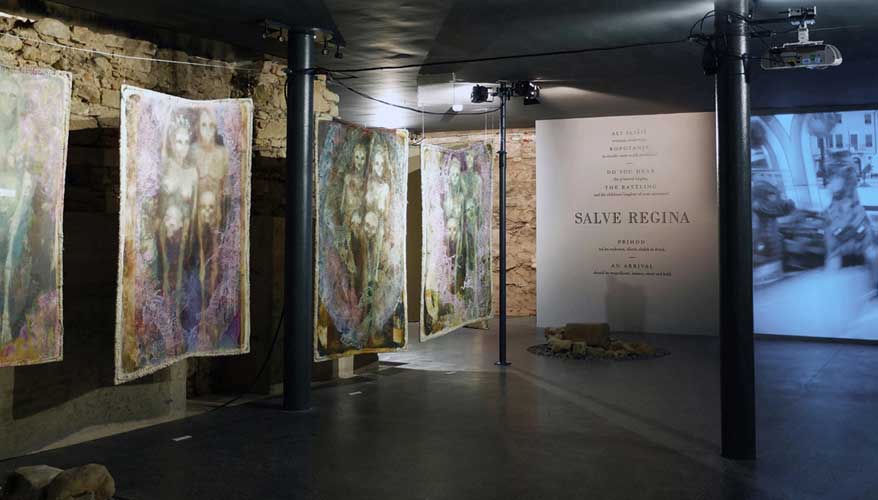 ...
...
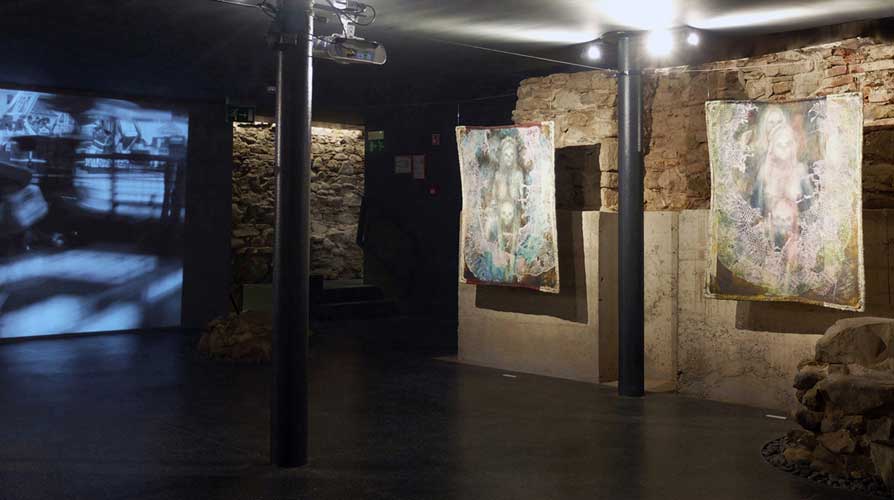 ...
...
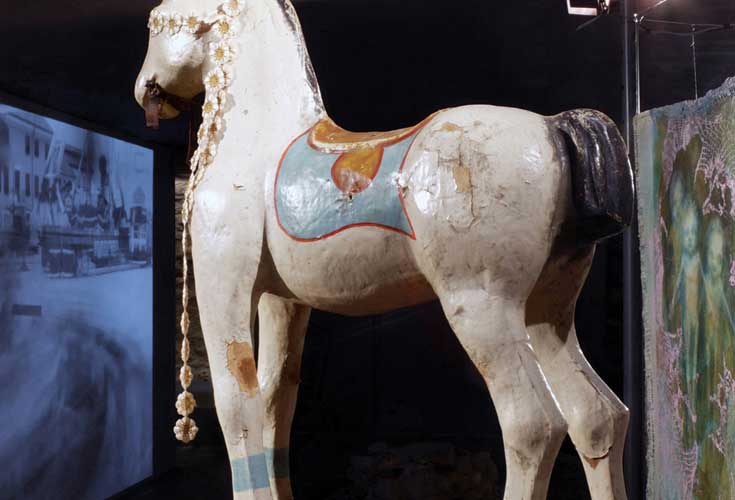 ...
...
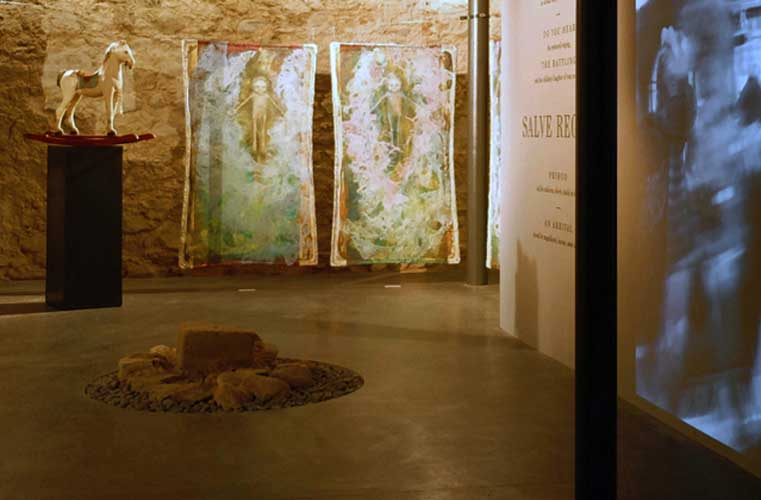 ...
...
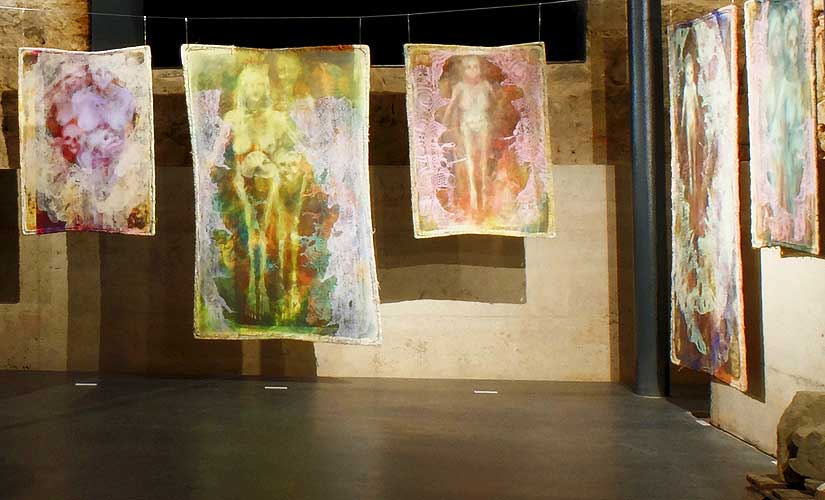 ...
...
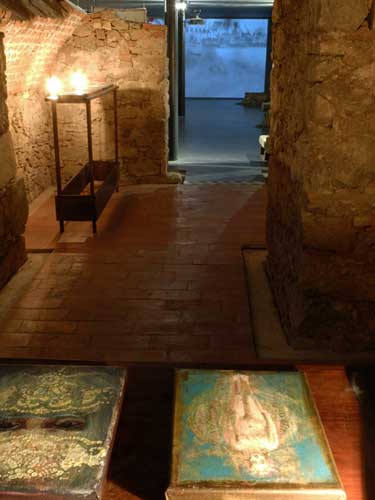 ...
...
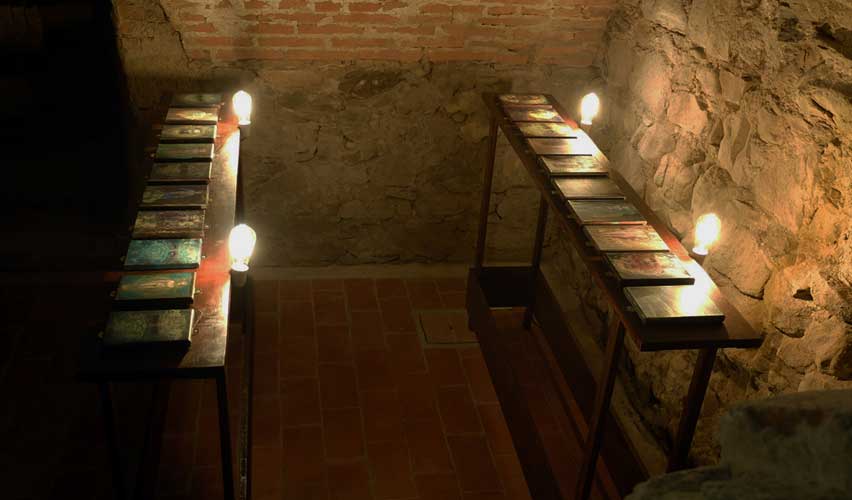 ...
...
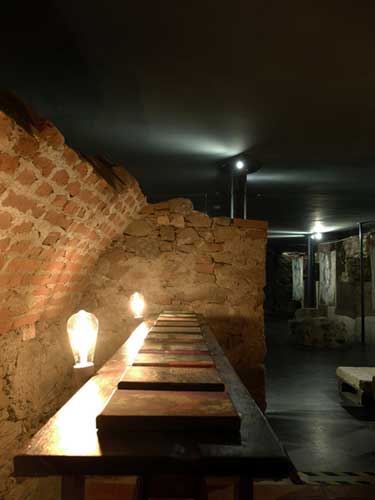 ...
...
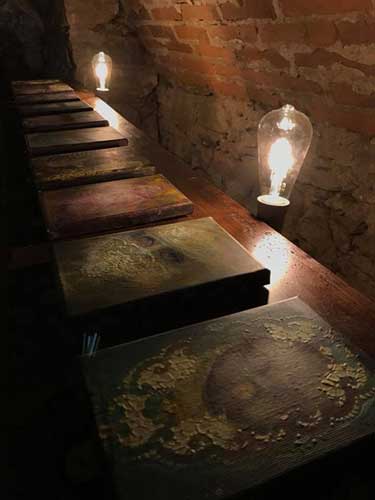 ...
...
